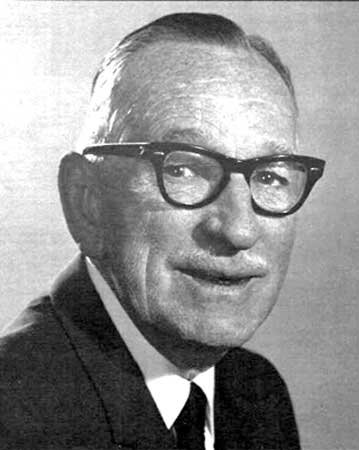Dr. E. A. Eklund, was an outstanding contributor to the sport of gymnastics. Best of all, he was a visionary without which no entity can progress. His vision was a Hall of Fame for gymnastics, and he acted on it. He was in favor of progress and not afraid of change. He placed his dedication to his internalized visions of a GHOF at the forefront of his work, but it took time to bear fruit. So the USGHOF was, in effect, the brainchild of E. A. Eklund whose ideas were refined and brought to fruition by the friends of gymnastics who followed. We who have been so honored owe him much.
Dr. Eklund was the National Secretary of the American Turners for 20 years, an organization that privately sponsors gymnastics and other teams in numerous cities; e.g., the Los Angeles Turners won six or seven National AAU Championships in the ‘60’s & 70’s. He also edited the American Turner Topics circulated to members of the organization. Among other contributions, he was responsible for the reinvigoration of cultural education within the Turner movement. In addition, he was for 32 years the Director of Oral Hygiene for the Cleveland, OH Board of Education. He served as a member of the U.S. Olympic committee, the Amateur Athletic Union, and President Eisenhower’s People to People and Sports committees. He was also the first subscriber to the Modern Gymnast according to Glen Sundby who founded the magazine in 1956. Dr. Eklund was a member of the Cleveland Turners (Socialer Turnverein STV) and his influence, service and contributions in gymnastics were continuous from 1937 until his death March 7, 1970. He served for a decade on the U.S. Olympic Gymnastics committee and was also active as an official in the U.S. Volleyball Association. He was a recipient of the American Turner key, the highest honor given by the Turners. A. Bruce Frederick’s research found that “EA”, long affiliated with the American Turners, was ahead of his time when in 1948 he proposed an annual election to a “Gymnastics Hall of Fame”. Frederick explains that Eklund’s proposal was in the form of a letter written to Roy E. Moore, then Chairman of the AAU Gymnastic Committee. No action was taken, but the seed had been planted, and with the passage of time, his vision of a GHOF may be his least known but most important legacy. After the death of Moore, George Szypula, 1970 HOF Inductee and the President of the National Association of American Gymnastics Coaches (NAAGC), was searching for a way to preserve Moore’s legacy, and contacted Bill Schroeder, Director of the Helms Athletic Foundation in Los Angeles, to inquire about the possibility of Moore being recognized in some way by the Helms Foundations. The Helms Foundation began in 1932 shortly after the Olympic games in Los Angeles and had developed Halls of Fame to recognize the many Olympic athletes who were generally unknown. Gymnastics more than met Helm’s criteria since it had been contested from the very first Olympics in Athens but was not well known in the U.S. at that time. With approval by Schroeder, Szypula organized an elite committee of prominent gymnastic personalities. Among other decisions made by the committee was that the first class of honorees would be presented at the Pan American Games to be held in Chicago in 1959. Ten gymnasts and 10 coaches, all men, constituted the 1st class of Gymnastic Hall of Fame Inductees. About 20 years later, Roberta Ranck Bonniwell, a 1988 HOF Inductee, a gymnast, a multi-sport athlete, and coach of the 1952 Olympic team, wrote to bill Schroeder noting that no women had been nominated. She made her point since a number of her “girls” had won prominence in gymnastics, setting records for women that are just now beginning to be equaled or exceeded. As a result, the first class of female honorees was elected in 1974 at the National Collegiate Invitational organized by Herb Vogal, 1974 HOF Inductee, at Southern Illinois University. Dr. Eklund was a many faceted contributor, but all good things must have a starting point, and Dr. “EA” Eklund provided a most important beginning move to develop the U.S. Gymnastics Hall of Fame.
Sources: A. Bruce Frederick, Ph.D. writing an article titled The USA Gymnastics Hall of Fame in the February 2005 issue of Technique magazine. Excerpts presented herein with permission. Be on the lookout for Frederick’s Roots of American Gymnastics, 3rd Edition. It is a wonderful history of our sport presented with easy to follow Line Drawings, time lines, and a great index. Introduction, commentary, and formatting by Dr. Larry Banner, Web Manager.

